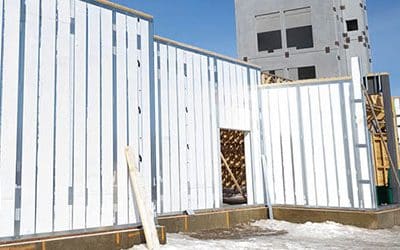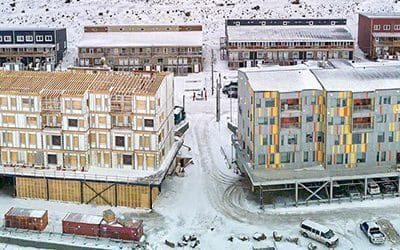Introducing a new building product to market is a daunting task. The building industry is lacking in its process for vetting, testing, and approving new products. The first and most difficult hurdle is the varying building codes. Canada has a model National Building Code (NBC) that releases new versions every 5 years. Each province either chooses if and when to adopt the updated versions with their own province-specific amendments, or to release their own building code entirely. While Canada has a National Building Code, adoption and enforcement are the responsibility of the province/territory jurisdictions.
The building code is made up of multiple “parts”. Wikipedia explains that, “houses and certain other small buildings (less than 3 storeys high and 600 m2) are considered ‘Part 9 Buildings’ and Part 9 drives the majority of the code requirements, with references to other parts where the scope of Part 9 is exceeded. Larger buildings are considered ‘Part 3 buildings’ and parts 1 through 8 apply. Part 3 is the largest and most complicated part of the building code. It is intended to be used by engineers and architects. Part 9 is very prescriptive and is intended to be able to be applied by contractors”.
ICE Panels are a new, innovative building product. Currently, such products are not permitted under Part 9 of the building code which pertains to “housing and small buildings” and follows the prescriptive compliance path.
ICE Panels can and have been used in Part 9 buildings but are not designed prescriptively. Prescriptive design looks at each component of the build to ensure it meets a minimum acceptable standard established by the jurisdiction. Performance design looks at the building as a whole, and requires energy-use modelling to predict usage against an acceptable baseline (source: bdcnetwork.com).
ICE Panels are a good fit for performance based designs found in Part 3 of the building code; mainly complex, large-scale, commercial buildings reviewed by an architect. This causes issues for homes and smaller buildings that alternatively fit into Part 9 of the code, which is based on prescriptive designs. As most authorities having jurisdiction (AHJ) use the prescriptive method for today’s residential builds, this tends to close the door to new building solutions in this sector.
The new energy code exposes the need for new technology in the building industry. If we hope to meet the energy reduction targets set by the Canadian Government, we need to rethink our current building standards.
Greenstone Building Products has developed the ICE Panel into both a nationally and internationally approved building technology to meet current and future building codes.
Our solution:
- ICE Panels have been evaluated to meet the intent of the National Building Code of Canada
- They can be designed to cost effectively meet the requirements of the National Energy Code
- The design of the ICE Panel follows the criteria for Part 3 buildings of the National Building Code of Canada
- Each ICE Panel is designed and sealed by a structural engineer
- ICE Panels are tested to international testing standards and inspected by QAI Laboratories – an international accredited laboratory.
In most jurisdictions across Canada, the building authorities having jurisdiction (AHJ) are open to reviewing the proposed use of ICE Panels under Part 9 for residential and smaller buildings as they understand meeting Part 3 of the code is a higher standard.
To curb the demand for fossil fuels, we will be forced to come up with practical, cost effective solutions. If we are going to embrace effective change and meet the new energy code requirements, we will need to be open to evaluating innovative products based on their merits.
To learn more about how you can build with ICE Panels, call Charnele, our Customer Service Coordinator at 204-726-1426 or connect via email at sales@gsbp.ca.



